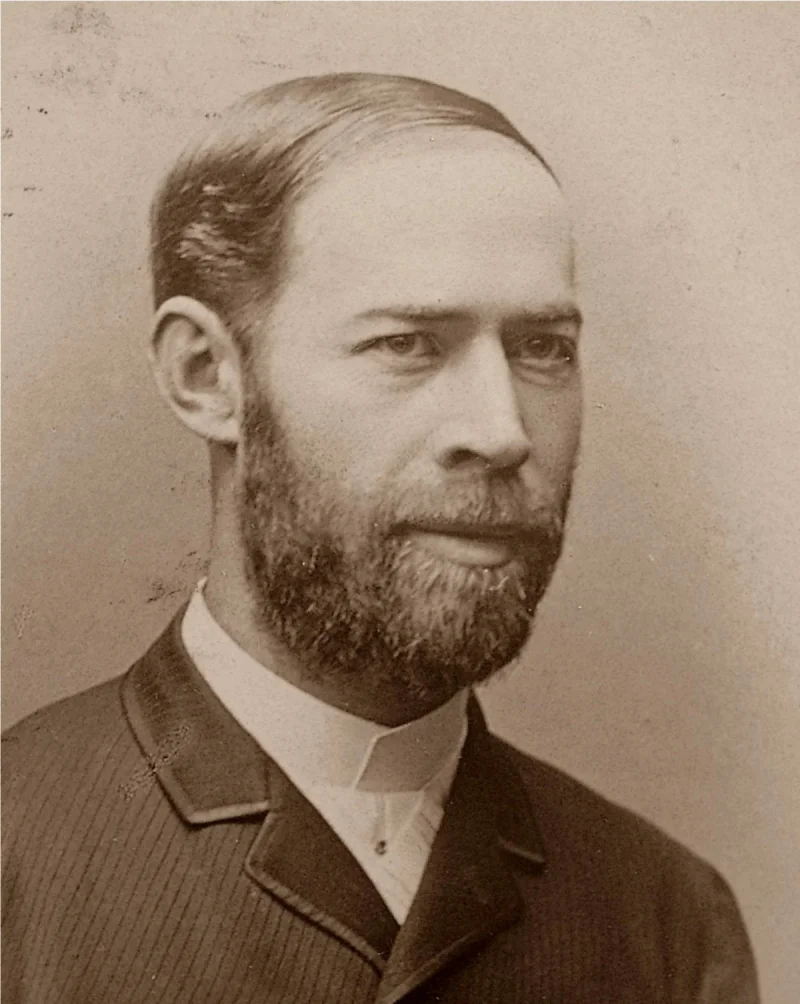Short Summary
Heinrich Rudolf Hertz was a pioneering German physicist renowned for his groundbreaking work in the field of electromagnetic theory. He is best known for conclusively proving the existence of electromagnetic waves, which laid the foundational work for modern wireless communication. Hertz's discoveries significantly advanced the understanding of electromagnetism, affirming the theories of James Clerk Maxwell. His name is immortalized in the unit of frequency, "hertz," which measures cycles per second.
Early Life & Education
Heinrich Hertz was born on February 22, 1857, in Hamburg, Germany, into a prosperous and intellectual family. His father was a lawyer and senator, and his mother was a doctor’s daughter. From a young age, Hertz displayed an aptitude for science and languages, excelling in both during his school years. He pursued higher education at the University of Munich and later at the University of Berlin, where he studied under the tutelage of Hermann von Helmholtz, a prominent physicist. Hertz's education was marked by his deep interest in mathematics and physics, which paved the way for his future contributions to science.
Career Highlights
Hertz's career was defined by his research and teaching roles at various institutions. After completing his doctorate, he worked as an assistant to Helmholtz, where he developed his interest in electromagnetic theory. His most notable work occurred while he was a professor at the Karlsruhe Polytechnic, where he conducted experiments between 1886 and 1889 that demonstrated the existence of electromagnetic waves. These experiments verified Maxwell's equations and showed that light and radio waves were manifestations of the same phenomenon. Hertz later held a professorship at the University of Bonn, where he continued his research until his untimely death.
Major Achievements
- Discovery of Electromagnetic Waves: Proved the existence of electromagnetic waves through groundbreaking experiments.
- Hertzian Oscillator: Developed an apparatus to produce and detect radio waves, pioneering wireless communication.
- Verification of Maxwell's Equations: Provided experimental confirmation of James Clerk Maxwell's electromagnetic theory.
- Unit of Frequency: The "hertz" was named in his honor, representing cycles per second.
- Influence on Modern Communication: Laid the groundwork for technologies such as radio, television, and radar.
Famous Quotes
- "I do not think that the wireless waves I have discovered will have any practical application."
Interesting Facts
- Hertz was initially interested in engineering before turning to the study of physics.
- He was fluent in Arabic, which he learned during his school years.
- Hertz's work was not widely recognized until after his death.
- He died young at the age of 36 due to an infection.
- The term "hertz" was adopted as a unit of frequency in 1930.
Legacy / Influence
Heinrich Hertz's contributions to electromagnetic theory have had a profound and lasting impact on science and technology. His discovery of electromagnetic waves paved the way for the development of modern communication systems, including radio, television, and other wireless technologies. The unit of frequency named after him, "hertz," is used globally, underscoring his enduring influence in the field of physics.
FAQ
Q: Why is Heinrich Hertz famous?
A: He is famous for his discovery of electromagnetic waves and his verification of Maxwell's equations.
Q: What did Hertz's experiments prove?
A: His experiments proved the existence of electromagnetic waves and confirmed Maxwell’s electromagnetic theory.
Q: What is named after Heinrich Hertz?
A: The unit of frequency, "hertz," is named in his honor.












